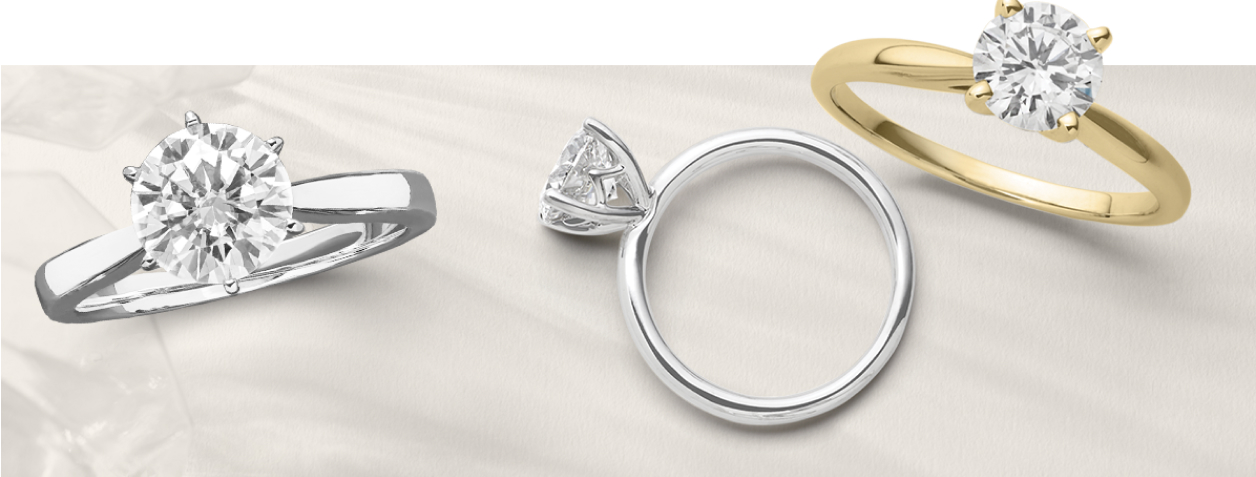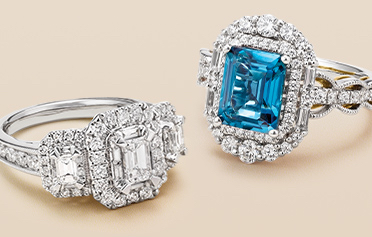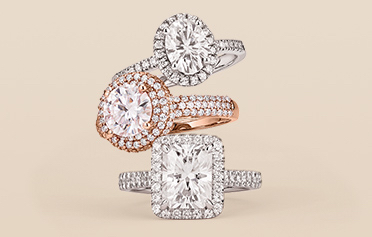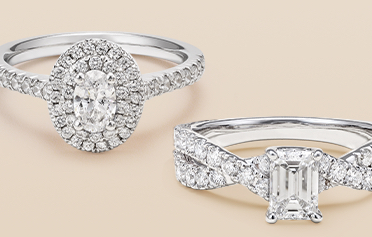moissanite vs lab grown diamonds
Searching for an alternative to natural gemstones and diamonds? You may have heard of both moissanite and lab grown diamonds. But what’s the real difference between the two? Here’s what you need to know about both types of stones and which may be right for you.

what is a lab grown diamond vs a moissanite gemstone?
Because lab grown diamonds and moissanite gemstones are created in dedicated facilities, they are both appealing, affordable options for people seeking stones that require no mining. Lab grown diamonds are chemically and structurally the same as natural diamonds, except they are man-made using highly specialized technology, equipment and responsibly sourced raw materials.
Made from the silicon carbide, moissanite is often used as a diamond alternative due to its durability, sparkle and affordability.
is moissanite a lab grown diamond?
Both lab grown diamonds and moissanite gemstones are created in dedicated facilities, making them appealing, affordable options for people seeking stones that require no mining. The difference lies in how each is made.
Lab grown diamonds are chemically and structurally the same as natural diamonds. The only difference is that they are created in dedicated facilities using highly complex processes, such as CVD (Chemical Vapor Deposition) or High Pressure High Temperature (HPHT).
When naturally occuring within the earth, moissanite is formed from the mineral silicon carbide. To create this brilliant gemstone in a lab, the process is duplicated through a combination of heat and pressure. Only experts can tell the difference between lab created and natural moissanite
what is the difference between
lab grown diamonds and moissanite gemstones?
Moissanite gems and lab diamonds share similar qualities with natural diamonds, and they are typically more affordable. While these two stone choices can seem similar, they differ in brilliance, durability, color, and price.
durability
Gemstones are measured on the Mohs Scale of Hardness, which assesses their ability to withstand surface scratching. Moissanite gems score a 9.25 on the Mohs Scale, while lab grown diamonds receive a 10. These scores make both stones well-suited for everyday wear in engagement rings and fine jewelry.
brilliance
Because their faceting pattern is different, moissanite gems exhibit a different type of brilliance than lab grown diamonds. Their fiery, rainbow flashes reflect the full color spectrum. Moissanite has a refractive index from 2.65–2.69, which is higher than natural diamonds. That said, a lab grown diamond reflects light in more complex ways via brilliance, dispersion, and scintillation, giving the stone its legendary sparkle.
color
Like natural diamonds, lab grown diamonds can vary in color. They are graded according to the same internationally recognized standards as natural diamonds (D–Z, colorless to light yellow or brown). Though moissanite stones are not graded on the diamond color grading scale, they often fall within the same color range. In fine jewelry, moissanite gems may be colorless, near-colorless, or have faint grayish or slight-yellowish hues.
price
While lab grown diamonds are more affordable than natural diamonds, their cost can range based on shape, or the 4 C’s: carat, cut, color, and clarity. Moissanite gems are dramatically lower in price compared to natural and lab grown diamonds, with costs varying based on size, color, and clarity.
schedule an appointment
Schedule an appointment online or in person to discuss more about moissanite stones and see Helzberg's selection of moissanite rings and jewelry today!
Schedule nowfrequently asked questions
Yes, moissanite is considered a gemstone. When it forms naturally, it’s composed of the mineral silicon carbide. Most moissanite gemstones are lab created, occurring through a heat and pressurized process. These stones are so brilliant that it takes an expert eye to differentiate lab grown moissanite from naturally occurring gemstones.
To the untrained eye, natural and lab grown diamonds are identical. However, jewelers with highly specialized equipment can inspect a stone to determine the type of diamond they’re looking at.
Yes! On the Mohs Hardness Scale, both lab grown and natural stones have a score of 10. Plus, lab grown diamonds are chemically and structurally identical to natural stones.
more advice

engagement buying guide
Finding the perfect engagement ring can be
overwhelming, but it doesn't

all about moissanite
A stone with major sparkle all its own,
moissanite is a popular

natural vs. lab grown diamonds
Learn the difference between diamonds mined
from the earth and diamonds grown















